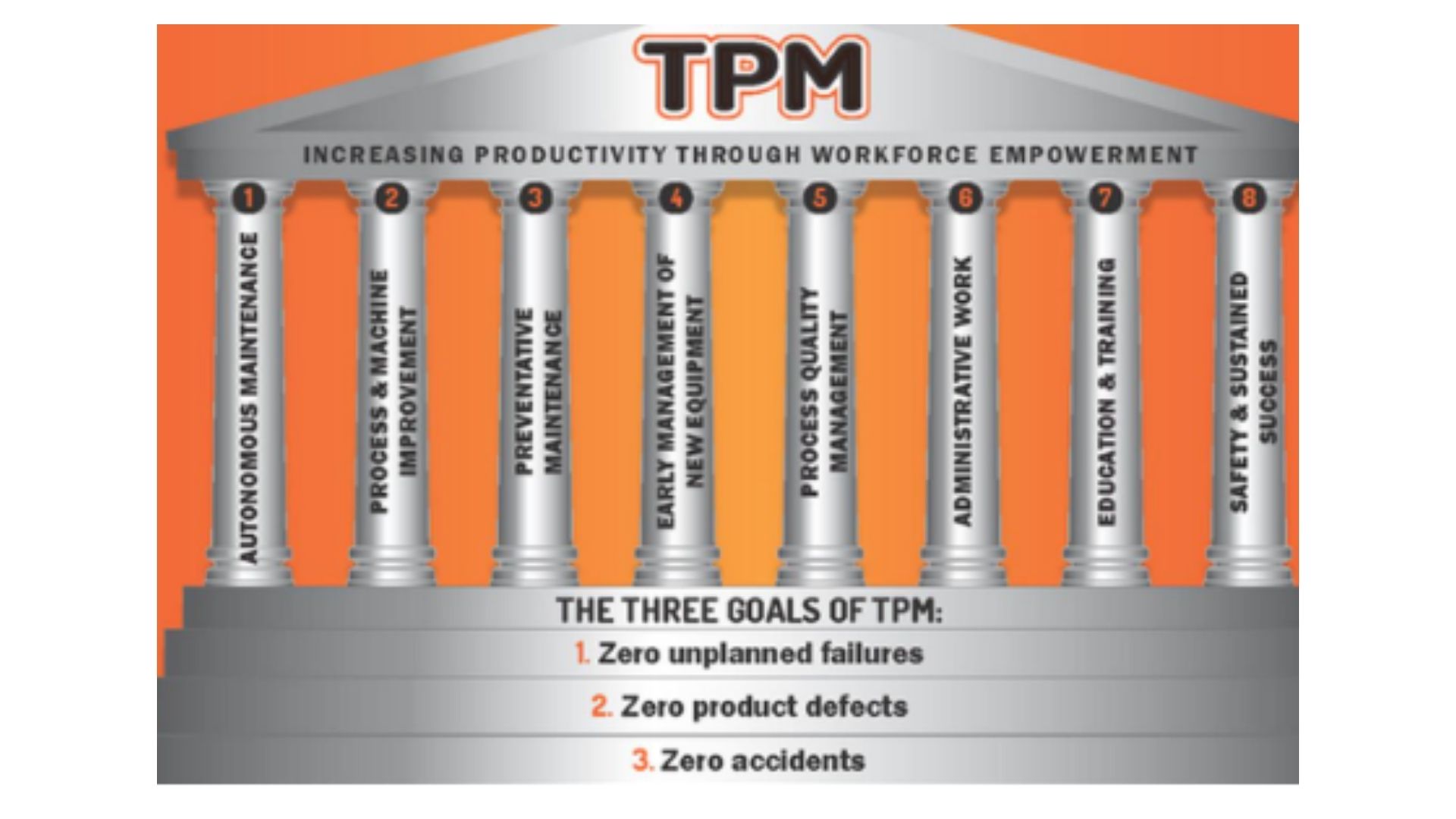What is TPM?
Total Productive Maintenance (TPM) is a culture focused on improving effectiveness through the empowerment of people to keep all machines at the forefront of their lifetime. TPM is also called Medical Science of Machines.
Who is known as the father of TPM?
Total Productive Maintenance (TPM) was invented in Japan by Seiichi Nakajima between 1950 and 1970, he is also called Father of TPM.
Benefits of Implementation of TPM?
- TPM improves OEE (Overall Equipment Effectiveness).
- The cost of production is reduced by 30%.
- Break-downs are reduced due to TPM.
- Customer complaints are reduced.
- Increases employee satisfaction and morale.
- The lead time for completing a new process or a new project is reduced. Customer satisfaction increases.
What are the 16 disadvantages in TPM?
- 1.Damage of equipment failure
- 2. Disadvantages of Setup and Adjustment
- 3.Tool change loss
- 4.Startup Loss
- 5.Minor pause
- 6. Speed Loss
- 7. Defect Loss
- 8.shutdown loss
- 9. Loss of Management
- 10.Operating Motion Loss
- 11.Line Organization Loss
- 12. Loss of not being able to automate
- 13. Loss of measurement and adjustment
- 14. Energy Loss
- 15.Die, jig and tool loss
- 16. Loss of production
What are the name of 8-Pillar of TPM?
- Autonomous Maintenance
- Process & Machine Improvement
- Preventative Maintenance
- Early Management of New Equipment
- Process Quality Management
- Administrative Work
- Education & Training
- Safety & Sustained Success.












Georgia Reader Reply
Very informative and simple to understand, thanks a lot for this training presentation.